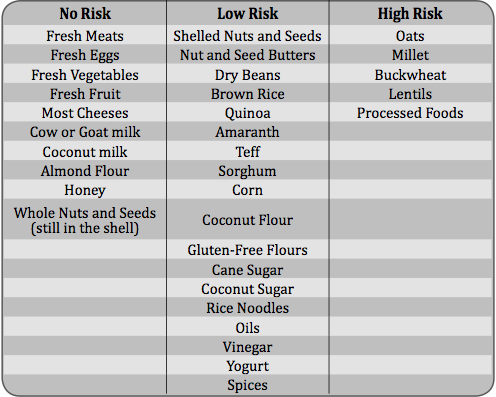by Tom Malterre
How common is gluten cross-contamination?
Going gluten-free means gaining a deeper understanding of your food supply and how food reaches you. Where is your food is grown? How it is processed, stored, transported, and sold? Are your grains being processed in the same facility as wheat is processed? Since gluten is found everywhere in our food supply, getting it completely out of your diet can be challenging. For example, certain foods such as millet and lentils are usually cross-rotated with wheat or barley out in the field. Look closely in your lentil jar and you will usually find a few whole gluten grains in it. All foods that require processing, however minimal it might be, run the risk of contamination if the facility being used also processes wheat or another gluten-containing grain or flour. This includes coconut flour, coconut sugar, and even so-called "gluten-free" flours. It is best to contact the manufacturer to determine if their facility is truly gluten-free. Other sources of cross-contamination include restaurants, grills, salad bars, cutting boards, wooden rolling pins, toasters, pizza stones, countertops, and bulk bins at grocery stores or co-ops. Remember, if you don’t remove 100% of the gluten from your diet, you run the risk of consuming small doses and, as a result, never allowing your system to fully heal.

References

Stay up to date with the current science and recipes that can help make your family healthy.
Add new comment